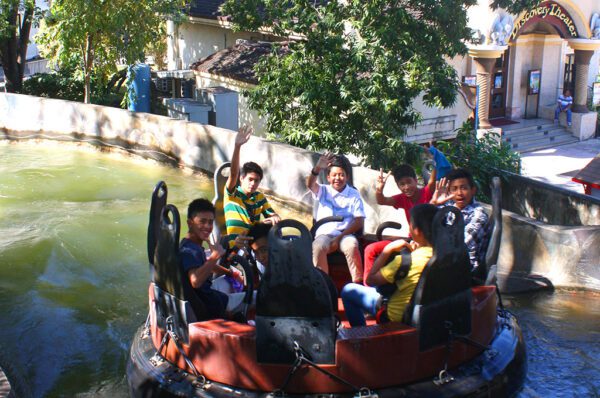
The death of an 18-year old visitor to the U.S National Whitewater Center in Charlotte, North Carolina, has drawn renewed attention to the safety of amusement parks and other attractions throughout the United States during this busy summer season.
Officials reported that the young woman from Westerville, Ohio died of an infection caused by a rare, brain-eating fresh water amoeba.
Death brings scrutiny to Whitewater Center
A renowned recreation and training facility for rafters, kayakers and other outdoor enthusiasts, the U.S. National Whitewater Center has attracted significant scrutiny following the death of Lauren Seitz last month. Visiting the center with members of her church group, Seitz encountered Naegleria fowleri, a one-celled amoeba known for causing primary amoebic meningoencephalitis, a condition that is almost always fatal. It is thought that she was exposed to the organism when her raft overturned.
Officials from the Centers for Disease Control and Prevention (CDC) visited the center to conduct on-site water testing, later revealing that all 11 of the samples taken tested positive for the deadly amoeba. Dr. Jennifer Cope of the CDC deemed the UV filtration and chlorination systems present at the facility inadequate to protect its visitors, setting into motion a comprehensive review by state public health authorities who will determine what sorts of preventive measures are necessary going forward.
Safety standards far from clear
The incident at the U.S. National Whitewater Center has prompted many to question just how safe amusement parks and similar attractions throughout the country truly are. The frightening fact is that such facilities are generally under no uniform standards of inspection or reporting, and there are several states in which the safety of park rides and activities are subject to no state or federal regulations whatsoever, with matters of inspection and review left to the discretion of local agencies.
Authority over amusement park oversight was taken away from he U.S. Consumer Product Safety Commission in 1981, when the aptly-named “roller coaster loophole” was passed by Congress. This eliminated the federal government’s ability to inspect fixed site attractions. The state-by-state patchwork of regulations that remains has created significant inconsistencies and gaps in standards as well as what many see as a lack of transparency with regard to accident reporting.
While amusement park lobbyists suggest that there is no evidence indicating that increased federal involvement would produce noticeable safety gains, victim advocates decry what they view as a blatant absence of essential supervision over potentially dangerous endeavors in which negligence can and does prove deadly.
Amusement park liability & victims’ rights
When a serious injury or death occurs at an amusement park or other tourist attraction, the prospect of filing a lawsuit can seem extraordinarily daunting. Considering that litigation of this type can involve numerous areas of the law such as product liability, premises liability, general negligence and more, it is important to secure the aid of an amusement park injury attorney who is able to fight for maximum compensation.
Victims and their families need to know that they are not alone in seeking payment for things such as pain, suffering, medical bills, lost wages, physical therapy and more. The aftermath of an incident of this type can be extremely confusing and fraught with uncertainty, and the assistance of a knowledgeable personal injury lawyer can make all the difference in a time of crisis.
Advocating for Mainers since 1976
If you or a loved one have suffered a profound injury while visiting an amusement park or similar attraction, the attorneys of Hardy, Wolf & Downing are prepared to fight hard to secure the accountability and financial recovery you deserve.
For a no-cost, no-obligation consultation with trusted Maine accident lawyers, please call 1-800-INJURED.

